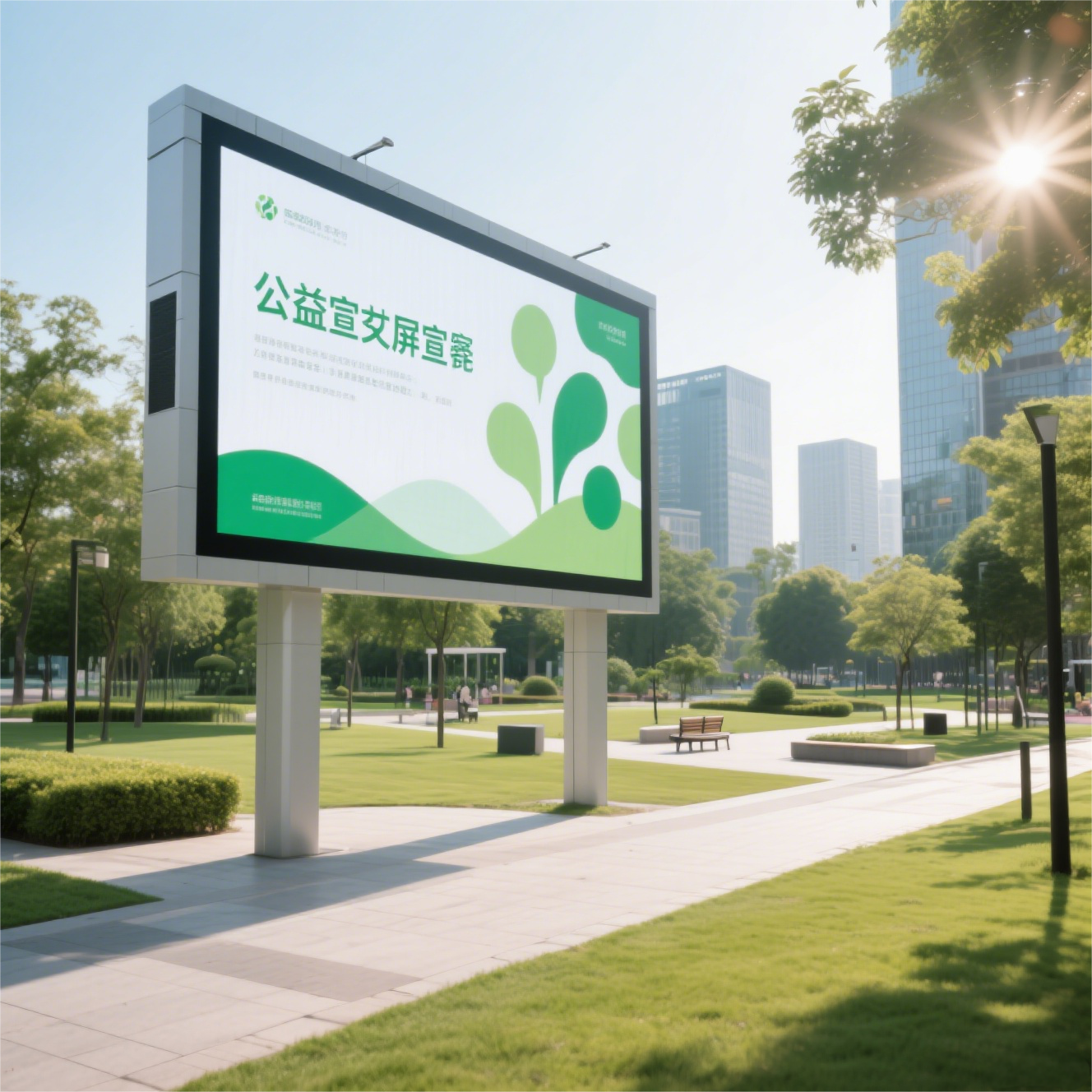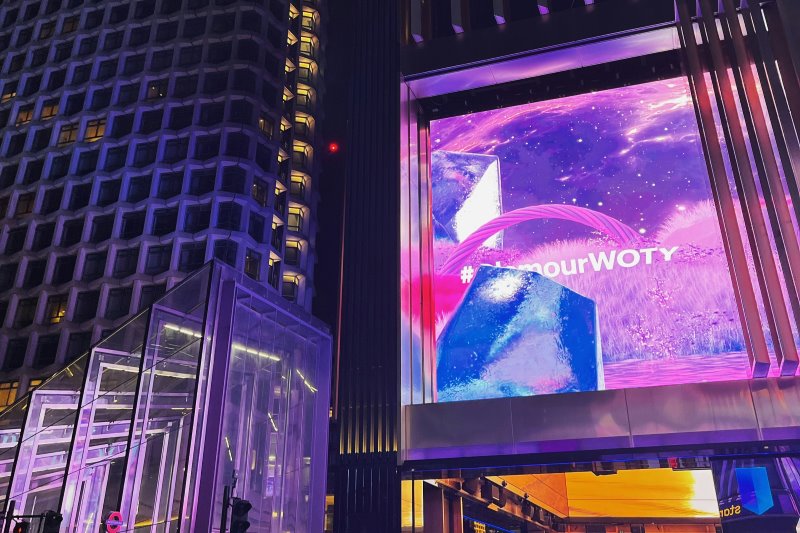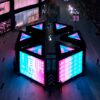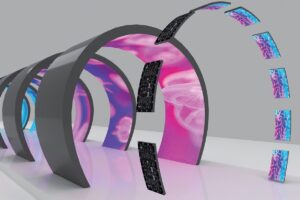Interactive LED Displays Demand Trends Driven by Retail Digital Transformation
The retail industry is undergoing a rapid digital transformation, driven by consumer expectations for personalized experiences, real-time engagement, and immersive shopping environments. Within this evolution, interactive LED retail displays have become a strategic tool for retailers to enhance customer interaction, brand engagement, and operational efficiency.
As brick-and-mortar stores compete with e-commerce platforms, retailers increasingly adopt modular LED screens and interactive signage solutions to create dynamic visual experiences. This article explores how product innovation in interactive LED displays shapes retail digitalization, highlighting market trends, technical advantages, and competitive dynamics.
I. The Role of Interactive LED Displays in Retail
Retailers face growing pressure to retain customer attention and encourage in-store engagement. Static signage no longer suffices. Interactive LED displays allow brands to deliver dynamic content, respond to real-time events, and integrate digital services.
1. Enhancing Customer Engagement
By incorporating touch, gesture, or mobile interactivity, LED displays transform traditional product information into immersive experiences. Customers can:
-
Browse product catalogs digitally
-
Explore virtual product demonstrations
-
Access personalized promotions
These interactions increase dwell time and conversion rates, providing measurable ROI for retailers.
2. Supporting Omnichannel Strategies
Interactive displays integrate seamlessly with online retail platforms, enabling:
-
Click-to-purchase functionality
-
Loyalty program integration
-
Mobile app synchronization
By bridging physical and digital channels, these displays strengthen brand loyalty and enhance the shopping journey.

II. Product Advantages Driving Adoption
The rise of interactive LED retail displays stems from technical innovation and operational benefits.
1. Modular Scalability and Customization
Each LED module can function independently, allowing for customizable display sizes and shapes. This modularity enables:
-
Wall-to-wall video walls for flagship stores
-
Compact interactive kiosks in smaller retail locations
-
Curved or irregular installations to fit architectural designs
This flexibility ensures that retailers can adapt displays to space constraints and branding requirements.
2. High-Resolution Visual Performance
Modern displays feature fine pixel pitches, delivering sharp, vivid images at close viewing distances. High brightness and contrast ensure visibility under store lighting, while HDR and color calibration technologies enhance visual fidelity.
3. Durability and Maintenance
Retail environments demand long-lasting and low-maintenance solutions. LED modules are designed with:
-
Heat-dissipating structures for extended lifespan
-
Protective coatings to resist dust and wear
-
Easily replaceable panels to minimize downtime
This ensures consistent visual quality even in high-traffic areas.
4. Energy Efficiency
Advanced LED displays incorporate low-power technology and automatic brightness adjustment, reducing operational costs while meeting sustainability goals.
III. Integration with Retail Digital Ecosystems
Interactive LED displays are most effective when integrated into digital retail ecosystems.
1. Cloud-Based Content Management
Centralized control allows retailers to update content across multiple locations, enabling:
-
Coordinated marketing campaigns
-
Timely promotions and seasonal content
-
Remote monitoring of display health and performance
2. Data-Driven Personalization
Integration with IoT sensors and customer analytics enables real-time adaptation of displayed content. Displays can respond to:
-
Store foot traffic patterns
-
Shopper demographics
-
Historical purchasing data
This data-driven personalization improves engagement and encourages repeat visits.
3. AI-Enhanced Interactivity
Artificial intelligence enables predictive content delivery, such as recommending products based on shopper behavior. AI-powered displays enhance interaction relevance, increasing sales potential.
IV. Market Trends in Retail Interactive LED Displays
The market for interactive LED displays in retail is expanding due to several key trends:
1. Increased Investment in Experiential Retail
Retailers prioritize immersive experiences that combine visual impact, interactive technology, and entertainment. LED video walls and interactive kiosks create memorable in-store moments, differentiating physical stores from online competitors.
2. Growth of Small and Medium Retail Deployments
Modular LED displays are now affordable for smaller retailers, enabling widespread adoption beyond flagship locations. This trend democratizes advanced display technology across the retail ecosystem.
3. Integration with Mobile and AR Technologies
Interactive displays increasingly connect with mobile apps and augmented reality tools, allowing shoppers to:
-
Visualize products in 3D
-
Access virtual try-on features
-
Engage with gamified promotional content
These integrations enhance customer satisfaction and increase brand affinity.

V. Technical and Operational Challenges
Despite advantages, interactive LED displays face several challenges:
1. Installation and Calibration
Ensuring pixel uniformity, alignment, and color accuracy requires skilled installation. Modular designs simplify maintenance but demand precision during setup.
2. Content Management Complexity
Dynamic, interactive content requires robust software platforms and centralized control to maintain consistent messaging across multiple locations.
3. Cost Considerations
High-resolution, interactive displays require initial capital investment. However, long-term ROI from engagement and sales uplift typically offsets upfront costs.
VI. Future Directions
Several innovations will shape the next generation of interactive retail LED displays:
-
Ultra-fine pixel pitches (<1mm) for close-view indoor applications
-
Curved and flexible displays for immersive storytelling
-
Integrated AI and AR technologies for personalized shopping experiences
-
Energy-efficient microLED modules for sustainability and lower operational costs
-
Cloud-connected omnichannel management systems for centralized control
These trends indicate that interactive LED displays will remain central to retail digitalization, enabling enhanced engagement, operational efficiency, and immersive customer experiences.
Conclusion
Interactive LED displays are redefining retail environments by combining visual impact, interactivity, and data integration. Through modular design, high-resolution performance, and cloud-enabled management, these products support dynamic customer experiences, omnichannel strategies, and operational efficiency.
As retail continues to embrace digital transformation, interactive LED displays will remain essential tools for driving engagement, brand differentiation, and sales growth, empowering physical stores to compete with e-commerce platforms and meet evolving consumer expectations.








Leave a reply